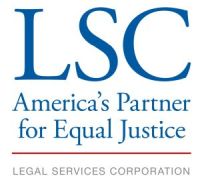Filter your results
Results 1 - 10 of 32. To narrow results enter search keywords or select filters.
Below is a module (a guided informational program) related to Medicaid Long-term Care issues and planning. This module/guide is available in English and Spanish.
https://www.idaholegalaid.org/files/html/medicaid-and-long-term-care
Medicaid has different programs available that provide health coverage for:
Medicare is a multi-part federal health insurance program managed by the federal government. A
person applies for Medicare through the Social Security Administration, but Medicare's rules are
written by another federal agency, the Centers for Medicare and Medicaid (CMS), and Medicare
claims are processed by private insurance companies, called "Fiscal Intermediaries" and
"Medicare Carriers," that vary from state to state.
What is Medicaid? Medicaid is a government program that pays for a broad range of health care, including hospitalizations, phhysician care, medications, and long-term care. Medicaid is administered by the Idaho Department of Health and Welfare, and an application for Medicaid may be submitted to any Department of Health and Welfare office.
Housing built before 1978 may contain lead-based paint. Lead from paint, paint chips, and dust can pose
health hazards if not managed properly. Lead exposure is especially harmful to young children and pregnant women. Before renting pre-1978 housing, lessors must disclose the presence of known lead-based paint and/or lead-based paint hazards in the dwelling. Lessees must also receive a federally approved pamphlet on lead poisoning prevention.
Simple Steps To Protect Your Family From Lead Hazards.
Once a creditor sues and obtains a judgment (court order) against a debtor they must follow a legal process to obtain payment. The creditor collects on a judgment through a "Writ of Execution" which directs a sheriff to seize the debtor's money, property, or real estate to pay the debt (in limited situations, money or property may be taken before a court enters a judgment). A creditor must collect on the debt within five years after a court issues a judgment, although a creditor can renew a judgment for additional five year periods.
Un acreedor puede requerirle a un empleador a desviar parte del sueldo de un empleado para pagar un fallo/ sentencia. El acreedor está limitado a tomar el sueldo de un deudor que: a) exceda treinta (30) veces el sueldo mínimo federal ($7.25 por hora vigente 24 de julio 2009), o b) es 25% del ingreso disponible. Cualquier exención cual permite al deudor mantener más de su sueldo aplica. Ingreso disponible es el pago neto del deudor después de las deducciones requeridas por ley, tal como impuestos, cuales son rebajados...
What is a garnishment? A garnishment is basically a legal collections tool where a creditor obtains a court order compelling an employer to withhold a portion of an employee’s wages. The amount that can be withheld is capped at 25%, however, the percentage may vary depending on the state issuing the garnishment and the type of debt. The cap applies to all creditors, meaning 25% is the most that can be withheld at any one time. Garnishments, however, are not limited to wages and can involve one time garnishment of bank accounts or personal property.
As with most legal questions, the answer is fact specific. The instant a bankruptcy case is filed, your creditors are prohibited by law from contacting you, attempting to collect a debt and yes, they are also prohibited from foreclosing on your home. Even if your home is scheduled to be sold at foreclosure tomorrow and you file bankruptcy today, an injunction called the automatic stay will temporarily sheild you from creditors, forcing your lender to immediately cease and desist with foreclosing.
Pagination
Close
Filter your results
Type
Topics
Tags
Our Partners
LSC's support for this website is limited to those activities that are consistent with LSC restrictions.

